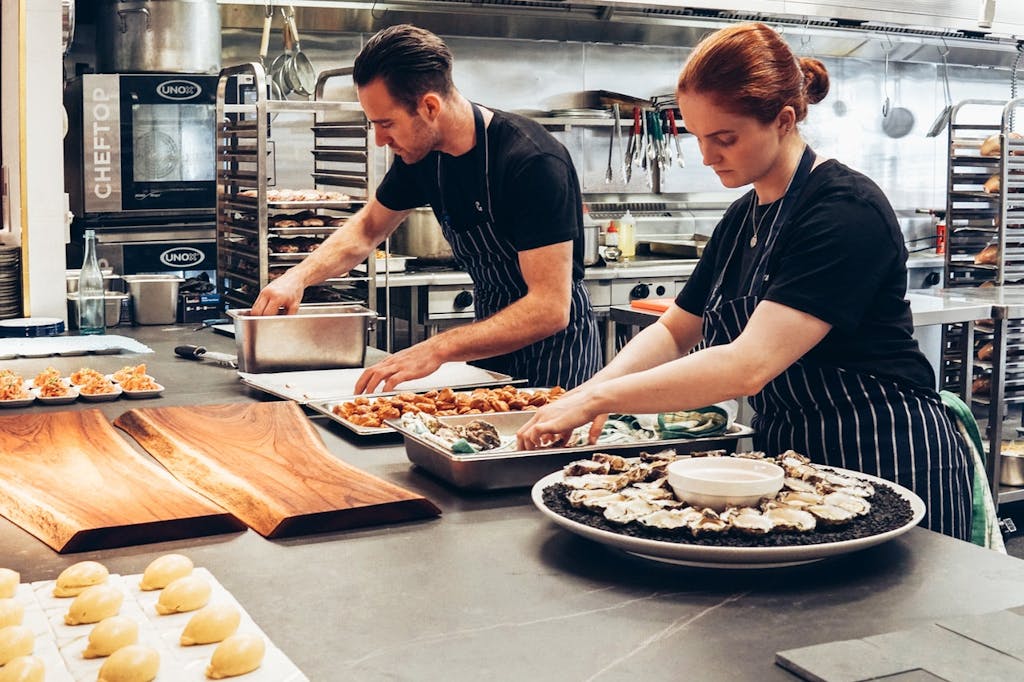My appetite turned up to “high”, I embarked on a voyage around the rich and sometimes enigmatic palette of the island’s flavours. It was autumn and the fields and woods gave off balsamic fragrances of camomile, rosemary and pine. One dew-drenched morning I set off with Lucia, of Farmer’s Way, a food-tourism outfit that lays on visits to artisan food producers, to a series of farmhouses in the rolling countryside of the interior. At one of these farms I watched Pedro Marquès and his family at work on their prize-winning artisan Binillubet cheese, made from the unpasteurised milk of their own cows. A few miles away at another whitewashed farmhouse, I met Italian expat Omar Zola, whose island-grown saffron has been wowing chefs across the island and beyond. Like wine and olive oil, saffron had not been produced here for centuries, said Zola, and his project marked the beginning of a renaissance.
There may have been no wine in premodern Menorca, but there was certainly plenty of gin. At the old Xoriguer distillery in Mahon harbour, I learnt about the island’s love-affair with this legacy of British colonial rule and its still egregious role in local life. Maria, who showed me around, regaled me with anecdotes about the three generations of the Pons Justo family who still run Xoriguer, and about the brand’s iconic bottles, whose curious ring at the top was originally designed to be hooked to the belts of sailors. Offering me a shot of pomada, a refreshing combo of gin and fresh lemonade, Maria explained this was Menorca’s tipple of choice especially in high summer, when neighbours make up batches at home and drink little else during the island’s mad midsummer fiestas of San Juan.
What I found as I traversed the island’s wineries and dairies, its pastry-shops and tapas bars, suggested its status as a prime European gastro-zone was well-deserved. The cooking at Mon and Smoix, Ca na Pilar and Sa Pedrera, was as thrillingly up-to-date as anywhere in Madrid or Barcelona, yet even at restaurants that didn’t aspire to alta cocina the standard seemed high.
Notable among the top 10 dishes of my Menorcan journey were the stuffed squid at Mon, a local classic deconstructed; and David de Coca’s radical take on the lobster stew caldereta de llagosta, which I tried one lunchtime at Sa Llagosta in Fornells, way up on the wild north coast. De Coca’s version of this famous dish was all about the fabulously intense stock – pure seafood umami – with just a meaty chunk or two of lobster to remind you of its origins.

:max_bytes(150000):strip_icc()/types-of-engagement-ring-settings-guide-2000-86f5b8f74d55494fa0eb043dee0de96e.jpg)

More Stories
Cinnamon Roll French Toast Casserole
Peanut Butter Kiss Cookies – Fit Foodie Finds
Crisp Apple Salad – A Couple Cooks